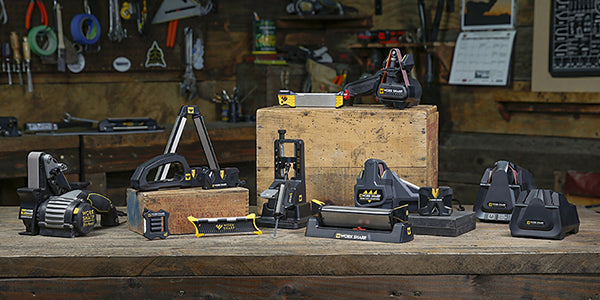What to look for when searching for a chef's knife
(for other reviews and helpful insight, check out this blog: www.cutitfine.com )
 (Photo courtesy of Cutlery and More)
(Photo courtesy of Cutlery and More)
Also known as a cook’s knife and a French knife, a chef’s knife is a large knife originally used by chefs and butchers to separate meat at its joints. This may be why the popular horror movie props falsely earned the name “butcher’s knife” despite the fact that the term butcher’s knife was originally used most often to describe a cleaver. In more recent years, the chef’s knife has become more like an all-purpose knife and is the favorite of many home and restaurant chefs. Its ability to chop, slice, dice, and mince makes this knife the perfect addition to any kitchen. So, what should you look for when purchasing a chef’s knife?
A Sharp Knife Is Important
It should seem obvious that you will want to find a sharp knife. Despite how obvious this may seem many people appear to miss this point, somehow. A sharp knife is actually important for your safety. Many beginners shy away from extremely sharp knives – especially when working with large knives – because they are afraid of chopping off their fingertips or slicing into their flesh. While you should always be careful to handle any knife with care, it is important to know that a dull chef’s knife is actually more dangerous that a sharp one.Western and Asian Edges
You may not know this, but chef’s knives are constructed differently in western countries (such as European and North American countries) and Asian countries. The major difference in their construction is the angle of their sharp edges. Western knives usually feature a cutting edge which has been sharpened to a 20-degree angle. Asian knives are sharper, sharpened to a 15-degree angle. Considering that I just told you a sharper knife is better, I am sure that you can easily deduce that I suggest selected an Asian model with a sharper angle. Of course, if you have selected a knife with a steel blade and are confident in your blade sharpening skills, you could always sharpen an American blade to a sharper angle. Either way, it is important to be aware than different knives may be sharpened at different angles.A Strong Knife Is Important
You want to feel as though it is okay to place your weight on your knife without worrying that it will bend or snap in half. For that reason, I suggesting finding a knife made from a strong metal. High-carbon metals are generally quite strong (stronger than stainless steel) but each type of metal differs slightly. When looking for a strong knife, I suggest actually handling the knife. Pick it up. See if it feels heavy or light. Of course, you will not want your knife to be so heavy that your wrist grows weak and tired after cutting a single onion. Still, heaviness signifies strength as well, so try to find one with a decent weight. Try to bend the blade. If the blade bends, even the slightest bit, put the knife back. Don’t even bother wasting your time on it – it will disappoint you.Get a Grip
 (photo from Steamy Kitchen)
(photo from Steamy Kitchen)
A firm, stable and comfortable grip is extremely important when working with any knife, especially a large knife such as this one. As you can see in our Use and Care guide, you will often be working with your fingertips very close to this knife’s cutting edge. It is essential that you maintain control over the knife as you are doing you work – no one wants to lose a finger. A firm, stable and comfortable grip is extremely important when working with any knife, especially a large knife such as this one. As you can see in our Use and Care guide, you will often be working with your fingertips very close to this knife’s cutting edge. It is essential that you maintain control over the knife as you are doing you work – no one wants to lose a finger. You may not think it can happen to you, but it can. Even experienced, well-trained chefs have lost fingers and required stitches in the palms of their hands from time to time. Although I am generally a fan of knives fully forged from a single piece of metal, I also believe in the importance of incorporating some sort of grip onto the handle. As I use my chef’s knife to slice and dice everything from onions and tomatoes to potatoes and garlic, I find that my hands often grow slick, slimy, sticky, and wet at times. The juices from the foods I am cutting get all over my hands and affect my ability to grip my knife effectively.
Stick With the Curve
You may have noticed that some chef’s knives are flat and some are curved. I highly suggest purchasing one with a slight curve. The curve is what will help you control your knife as you use it to accomplish different tasks. In fact, one of the most basic techniques (the rolling technique) depends upon this curve.Questions? Comments?
We love hearing from you! Scroll down to the bottom of the page and let us know your thoughts! If you'd like to be notified of when we publish recipes and knife skills, JOIN our newsletter!






